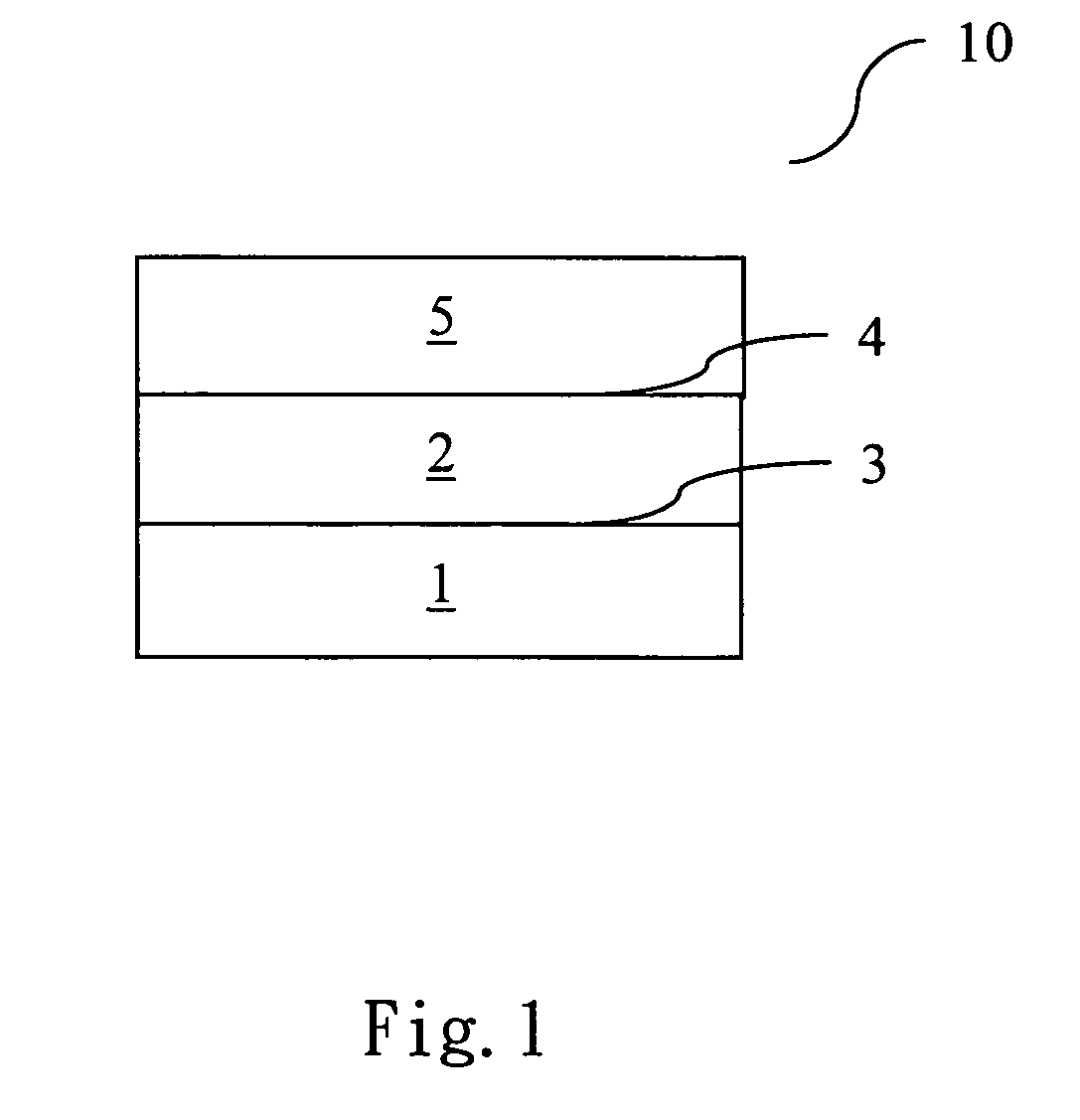Conveyor belt and method for producing the same
a conveyor belt and belt technology, applied in the direction of vehicles/pulleys, mechanical devices, other domestic objects, etc., can solve the problems of increasing production costs, environmental problems, and weakening strength and sustainability of weave produced, and achieve the effect of avoiding affecting tensile strength and elongation
- Summary
- Abstract
- Description
- Claims
- Application Information
AI Technical Summary
Benefits of technology
Problems solved by technology
Method used
Image
Examples
example
The Comparison of the Tetragonal Fiber Conveyor Belt and the Circular Fiber Conveyor Belt
[0023]In order to illustrate the advantages of the present invention, a circular fiber and a square fiber were both obtained and tested with rubber layers of different thickness. The sample and the related parameters are as shown below:
TABLE 1The comparison of conveyor belts of different specificationsgray cloth materialWarp yarnWeft yarnconveyor belt code(PET 1000D)(Nylon 66 840D)A1Upper rubberFar Eastern Ltd.Formosa Chemicals &thickness 5 mm(circular yarn)Fibre Corp. (circularyarn)A2Upper rubberFar Eastern Ltd.Industrial Technologythickness 5 mm(circular yarn)Research Institute(square yarn)B1Upper rubberFar Eastern Ltd.Formosa Chemicals &thickness 3 mm(circular yarn)Fibre Corp. (circularyarn)B2Upper rubberFar Eastern Ltd.Industrial Technologythickness 3 mm(circular yarn)Research Institute(square yarn)* Group A conveyor belt specification: 900 × 4P(EP-100) × 5 × 1.6 × 300. Group B conveyor bel...
PUM
| Property | Measurement | Unit |
|---|---|---|
| weight | aaaaa | aaaaa |
| length | aaaaa | aaaaa |
| width | aaaaa | aaaaa |
Abstract
Description
Claims
Application Information
 Login to View More
Login to View More - R&D
- Intellectual Property
- Life Sciences
- Materials
- Tech Scout
- Unparalleled Data Quality
- Higher Quality Content
- 60% Fewer Hallucinations
Browse by: Latest US Patents, China's latest patents, Technical Efficacy Thesaurus, Application Domain, Technology Topic, Popular Technical Reports.
© 2025 PatSnap. All rights reserved.Legal|Privacy policy|Modern Slavery Act Transparency Statement|Sitemap|About US| Contact US: help@patsnap.com


